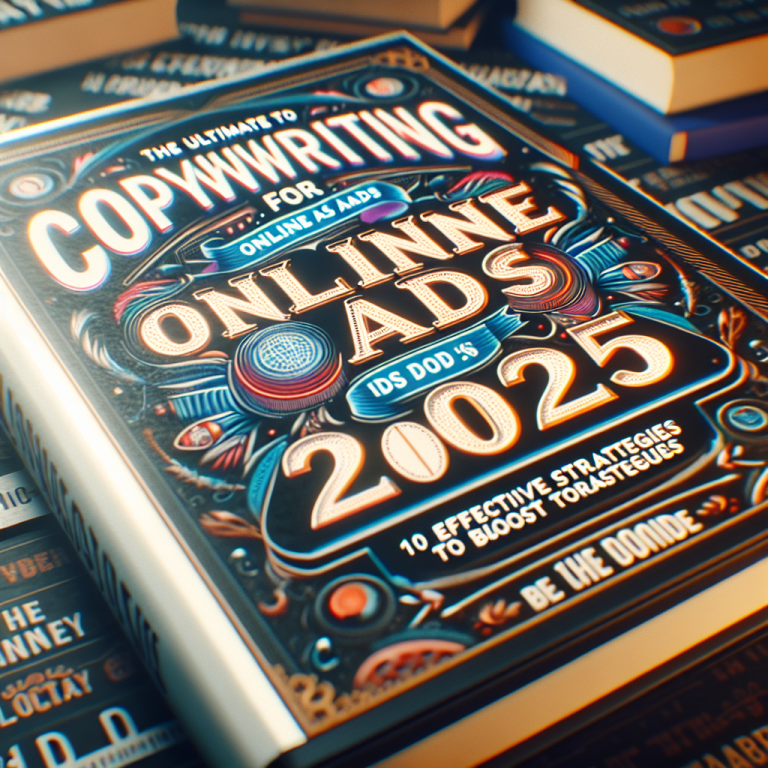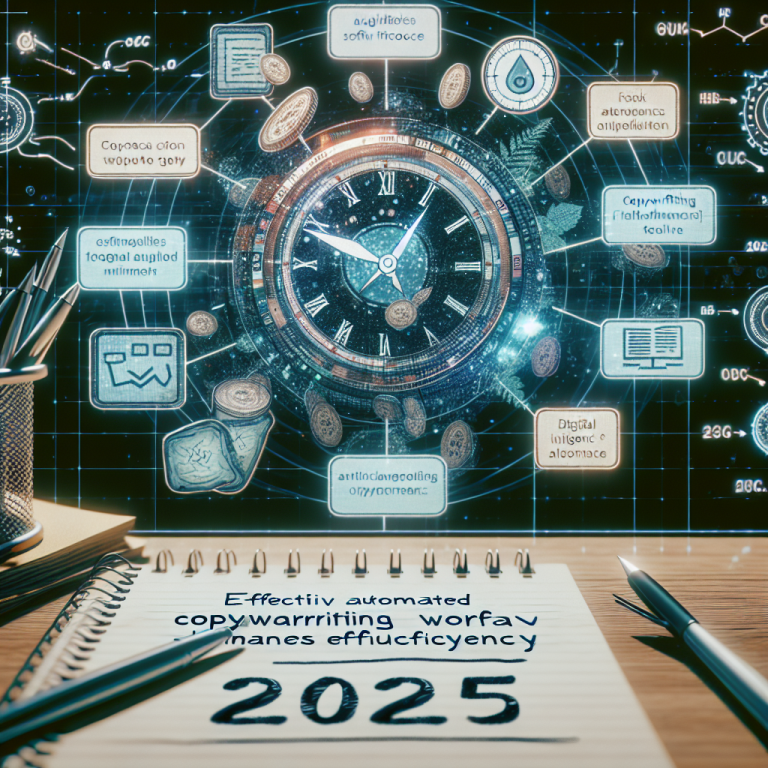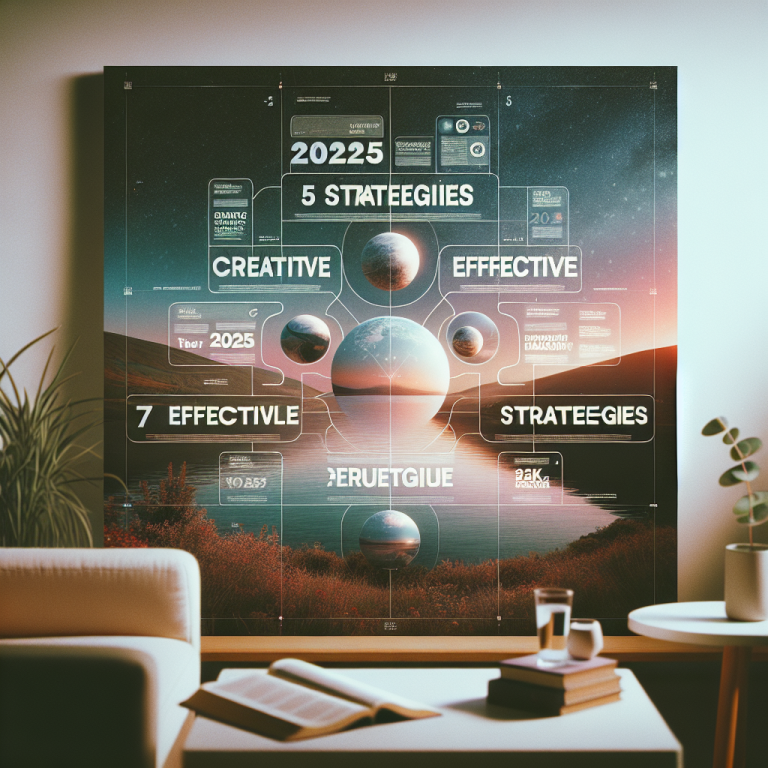10 Powerful Landing Page Optimization Strategies for 2025 That Boost Conversions
- 1. Craft Compelling and Clear Value Propositions
- 2. Enhance User Experience with Fast Loading Times
- 3. Use Persuasive and Strategic Call-to-Actions (CTAs)
- 4. Optimize for Mobile Devices
- 5. Leverage Social Proof Effectively
- 6. Incorporate Trust Elements (Security, Certifications)
- 7. Utilize A/B Testing for Continuous Improvement
- 8. Personalize the User Journey
- 9. Integrate Chatbots and Live Support
- 10. Analyze Data and Refine Regularly
1. Craft Compelling and Clear Value Propositions
Understanding the Power of a Strong Value Proposition
One of the fundamental aspects of successful landing page optimization is crafting a compelling value proposition. Your visitors need to quickly understand what they will gain by engaging with your offer. In 2025, data shows that visitors spend an average of just 8 seconds on a landing page, making clarity crucial.
A clear and persuasive headline immediately communicates your unique selling point. For example, a SaaS company might use: “Simplify Your Workflow with Our All-in-One Tool.” This immediately tells visitors what theyâll get and why it matters.
Test different value propositions to see which resonates most. Use tools like heatmaps and analytics to understand what message drives engagement. The goal is to eliminate confusion and foster trust quicklyâkey for landing page optimization success.
Applying Psychological Triggers
Utilizing psychological triggers such as scarcity, urgency, and exclusivity can boost your value proposition’s effectiveness. For instance, phrases like âLimited Time Offerâ or âOnly a Few Spots Leftâ motivate visitors to act swiftly.
Make sure your value proposition is prominently positionedâabove the foldâand visually emphasized through contrasting colors and bold fonts. The combination of compelling copy and strategic placement is essential for driving conversions in 2025’s competitive landscape.
Practical tip: Utilize customer testimonials or data points to reinforce your claims. For example, “Join over 10,000 satisfied users who boosted productivity by 30%.” This adds credibility and enhances the value proposition’s appeal.
2. Enhance User Experience with Fast Loading Times
The Importance of Speed in Conversion Rates
In 2025, landing page optimization is incomplete without prioritizing speed. According to recent studies, a one-second delay in page load time can reduce conversions by up to 7%. Visitors expect instant access; any delay sends them straight to competitors.
Tools like Google PageSpeed Insights or GTmetrix can help you identify and fix issues slowing down your pages. Optimizing images, leveraging browser caching, and minimizing code are practical steps to improve load times.
Remember, a fast-loading landing page not only increases conversions but also boosts your SEO rankings. Search engines favor websites that offer a seamless user experience, which is a critical part of landing page optimization in 2025.
Optimize Technical Performance
Implementing content delivery networks (CDNs) distributes your content globally, reducing latency. For example, if your target audience is mainly in Europe, hosting your assets on a European CDN can dramatically improve load times.
Use lazy loading for images and videos to ensure only the visible content loads initially. This reduces unnecessary bandwidth use and accelerates page rendering.
Finally, regularly audit your siteâs technical performance with analytics tools to detect any new issues that could impair user experience and conversions.
3. Use Persuasive and Strategic Call-to-Actions (CTAs)
Crafting Irresistible CTAs
The most effective landing page optimization involves compelling calls-to-action that motivate visitors to take the desired step. Use action-oriented language such as âDownload Now,â âGet Started,â or âClaim Your Free Trial.â Keep your CTA clear, concise, and visually prominent.
Design CTAs that stand out by using contrasting colors, ample whitespace, and strategic placement. Positioning a CTA above the fold ensures immediate visibility, especially important in 2025 when attention spans shrink.
Test different wording and design options regularly. Data shows that personalized CTAsâlike âGet Your Custom Quoteââcan increase conversions by up to 30% compared to generic CTAs.
CTA Placement and Timing
Strategic placement within your landing page flow can significantly impact results. Placing primary CTAs after explaining your value proposition captures ready-to-act visitors.
In longer pages, include multiple CTAs spaced appropriately to guide users through the sales funnel. Consider using sticky or floating CTAs that follow visitors as they scroll for continuous engagement.
Leverage urgency and exclusivity in your CTA text when appropriate, such as âOffer Ends Tonightâ or âLimited Spots Remaining,â to create a sense of immediacy that drives action.
4. Optimize for Mobile Devices
Mobile-First Design Principles
With over 70% of web traffic coming from mobile devices in 2025, landing page optimization must prioritize mobile responsiveness. A mobile-first approach ensures your page looks and functions flawlessly on all screen sizes.
Use responsive design frameworks like Bootstrap or Foundation to create flexible layouts that adapt seamlessly to any device. Avoid fixed-width elements that may break layout or cause horizontal scrolling.
Test your landing pages on various devices regularly. Googleâs Mobile-Friendly Test tool indicates whether your page provides a positive experience on smartphones and tablets.
Streamlined Navigation and Touch-Friendly Elements
Ensure navigation is simple and touch-friendly, with large buttons and minimal clutter. Small clickable elements can frustrate mobile users and lead to higher bounce rates.
Optimize forms for mobile by reducing the number of fields and using larger input areas. Autofill options can also improve the speed and ease of filling out your forms.
Remember, mobile optimization is a core aspect of landing page optimization in 2025 and critical for capturing the growing mobile audience.
5. Leverage Social Proof Effectively
Showcasing Testimonials and Reviews
Social proof remains one of the most persuasive elements in landing page optimization. Positive testimonials from happy customers or industry experts can immediately build trust and credibility.
Display reviews prominently, ideally near your CTA or value proposition. Use real names, photos, and detailed feedback for authenticity. In 2025, 92% of consumers trust peer recommendations more than advertising.
For added credibility, include case studies with measurable results, such as âOur clients increased sales by 25% within 3 months.” These evidence-backed claims are powerful motivators for visitors.
Incorporating Trust Badges and Endorsements
Trust badges from recognized authorities, security certifications (SSL), and awards can help reduce hesitation. Place these near your checkout or sign-up areas to reinforce security and legitimacy.
Partner with reputable third-party review sites like Trustpilot or G2 to display badges. In 2025, consumers are more cautious, so visible trust indicators are vital for effective landing page optimization.
Action tip: Regularly update your testimonials and review badges to reflect your latest achievements and maintain authenticity.
6. Incorporate Trust Elements (Security, Certifications)
Building Confidence with Security Features
Security is paramount in landing page optimization, especially when handling sensitive data. Displaying security badges, such as SSL certificates, reassures visitors that their information is protected.
Ensure your checkout and sign-up processes are encrypted with HTTPS, which not only boosts trust but also impacts your search rankings. A secure site is a top priority for 2025 consumers and search engines alike.
Include clear privacy policies and data handling explanations to make visitors more comfortable. Transparency fosters trust and encourages conversions.
Showcasing Industry Certifications and Awards
Being certified by reputable organizations or having industry awards displayed enhances your credibility. These elements serve as third-party validation, easing visitor concerns and promoting engagement.
For example, certifications like ISO or awards from industry bodies can differentiate your brand. Place these badges where they are easily visible but not intrusive.
In 2025, trust elements have become integral to landing page optimization, as consumers seek brands they can rely on confidently.
7. Utilize A/B Testing for Continuous Improvement
Creating Data-Driven Optimizations
Successful landing page optimization is an ongoing process. A/B testing allows you to compare different versions of your page elementsâheadlines, images, CTAsâto determine what performs best.
Allocate resources for regular testing cycles. For example, test variations of your CTA color or wording to see which converts higherâpotentially seeing boosts of 15-25% with minor changes.
Use tools like Optimizely or VWO to run tests efficiently. Record insights from each test to inform future design decisions and improve overall conversion rates.
Prioritizing Hypotheses for Testing
Start with elements that impact user behavior most: headlines, CTA placement, and images. Prioritize tests that promise the highest impact based on data and user feedback.
Set clear success metrics before testingâsuch as click-through rates or form completionsâand analyze results statistically significant to make informed decisions.
By integrating continuous testing into your landing page optimization strategy, you stay ahead in 2025âs competitive market.
8. Personalize the User Journey
Dynamic Content and Segmentation
Personalization has become a cornerstone of landing page optimization in 2025. By customizing content based on visitor demographics, behaviors, or source, you increase relevance and engagement.
Implement dynamic content blocks that change messages, images, or offers depending on user segmentation. For example, first-time visitors see a different message than returning customers.
Use marketing automation tools to track behaviors such as pages visited or time spent on your site, tailoring the experience accordingly to boost conversions.
Case Studies and Real-World Examples
Brands like Amazon and Netflix have perfected personalization, leading to higher retention and sales. Applying similar tactics on landing pages can generate measurable results.
For instance, offering personalized discounts based on browsing history or showing testimonials relevant to the visitor’s industry adds authenticity and trust.
Effective landing page optimization in 2025 embraces personalization as a key driver of user satisfaction and conversion rates.
9. Integrate Chatbots and Live Support
Providing Instant Assistance
Instant support options like chatbots have become essential in landing page optimization. They reduce friction by answering questions in real time, helping visitors overcome objections.
Design your chatbot to address common concerns such as pricing, features, or security. Use AI-driven chatbots to provide personalized and context-aware responses, improving user experience.
For example, a chatbot can guide visitors to the specific product or service theyâre interested in, increasing the likelihood of conversion.
Human Support When Needed
Sometimes, visitors require more nuanced assistance. Offering live chat options ensures that when the bot cannot assist, a human support agent can step in seamlessly.
Integrate your chat support with your CRM to personalize interactions further. An efficient support system not only boosts conversions but also enhances overall customer satisfaction.
By combining automation with human touch, your landing page becomes more responsive and conversion-friendly in 2025.
10. Analyze Data and Refine Regularly
Leveraging Analytics for Better Results
The backbone of effective landing page optimization is data analysis. Use analytics platforms like Google Analytics or Heap to track user behavior, drop-off points, and conversion paths.
Identify patterns and bottlenecks. For example, if a significant percentage of visitors abandon the page at the sign-up form, consider simplifying or redesigning it.
Regularly review your metricsâbounce rates, dwell time, conversion rateâand adjust your landing page elements accordingly to continually improve performance.
Integrating Feedback and Market Trends
Gather qualitative feedback through surveys or heatmaps to understand user motivations and frustrations. Combine this with quantitative data for deeper insights.
Stay updated with industry trends and competitor strategies. In 2025, continuously refining your landing page based on real-world data ensures you stay competitive and maximize conversions.
Remember, landing page optimization is not a one-time task but an ongoing process crucial for sustained success.
Frequently Asked Questions
1. What is landing page optimization and why is it important in 2025?
Landing page optimization involves improving your landing pages to maximize conversions. In 2025, with evolving digital consumer behaviors, effective optimization is vital for capturing leads and increasing revenue.
2. How does A/B testing contribute to landing page optimization?
A/B testing allows marketers to compare different versions of a landing page element to identify which performs better, leading to continuous improvements and higher conversion rates.
3. What are the most critical elements for successful landing page optimization in 2025?
Key elements include a clear value proposition, fast load times, compelling CTAs, mobile responsiveness, social proof, trust indicators, personalization, chat support, and regular data analysis.
4. How can I improve my landing page speed for better conversions?
Optimize images, leverage CDNs, minimize code, and use caching strategies. Regular performance audits help identify and fix speed issues, crucial for effective landing page optimization in 2025.
5. Why is personalization important in landing page optimization?
Personalization tailors the user experience to individual visitors, making content more relevant and increasing the likelihood of conversion, especially as consumers expect more customized interactions in 2025.
Conclusion
Effective landing page optimization in 2025 requires a strategic combination of speed, relevance, trust, and continuous testing. By implementing these 10 powerful strategies, you can significantly boost your conversion rates and stay ahead of your competition. Remember, optimizing your landing page is an ongoing processâstay data-driven, personal, and user-focused to achieve sustained success in your digital marketing efforts. Mastering landing page optimization today paves the way for increased growth tomorrow.








